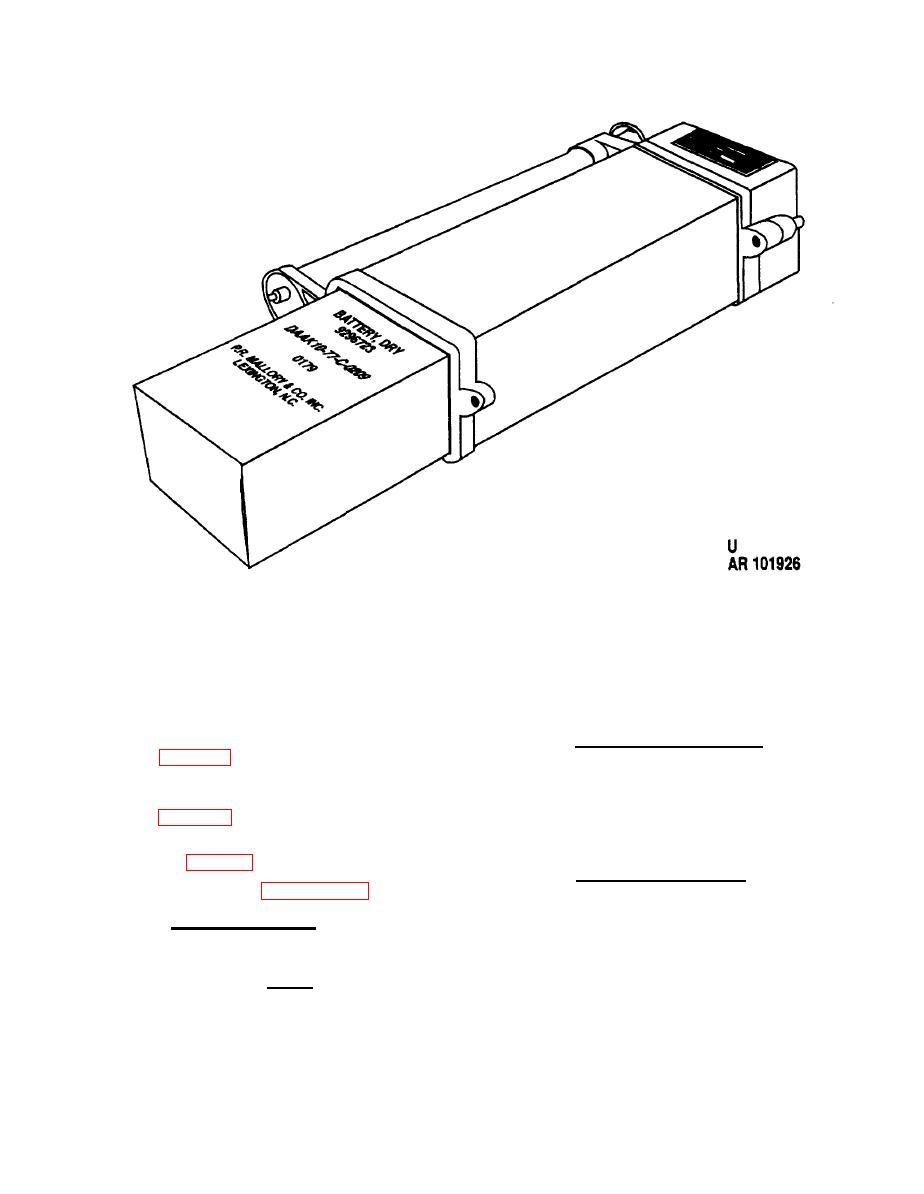 |
|||
|
|
|||
|
|
|||
| ||||||||||
|
|
 TM 9-1375-213-12-3
TO 11A20-15-1
Figure 1-8. Battery pack.
available in Demolition Equipment Set,
(2) The receiver requires a fresh alka-
Explosive Initiating, Electric and Non-
line D cell for optimum operation. If an alka-
electric, NSN 1375-00-047-3750.
line D cell is not available, a fresh standard
zinc-carbon flashlight D cell may be substituted
if the receiver will be used at a moderate tem-
perature (approx +60 to + 85F). For extremely
high operating temperatures (see tabulated
(1) Antenna wire for receiver. A 10-
of practically any insu-
foot (3.3 meters) length
data, para 1-11) a m ercury D cell maybe used.
lated wire with half an inch of insulation
Mercury batteries generally have better high
stripped from one. end for connection to the
temperature characteristics than the alkaline
receiver will make a good antenna. The solid
types. Because of their physical differences (see
single conductor wire, NSN 6145-00-542-3968,
note para 1-11), they may not work properly
avaiable in the demolition equipment set will
with some receivers. Therefore, whenever a
be satisfactory.
check out
mercury battery is used, always
Details on the
receiver (para 3-9) before use.
(2) Circuit test instruments. Either of
batteries and their expected useful "on-duty"
the two standard blasting circuit test instru-
life are tabulated in paragraph 1-11.
ments ma ybe used with the M122. The M51
test set, NSN 4925-00-999-3454, or the Blasting
e. Auxiliary Equipment.
Galvanometers, NSN 6625-00-539-8444, maybe
used to check out the receiver itself as well as
the blasting caps and firing circuit. Use of the
M40 test set with an M57 firing device (as used
NOTE
with the M18A1, Claymore Mine) is not advised
because it is rather cumbersome to adapt and
All auxiliary equipment necessary for
hook up to plain wires.
setting up and operating the M122 is
1-9
|
|
Privacy Statement - Press Release - Copyright Information. - Contact Us |